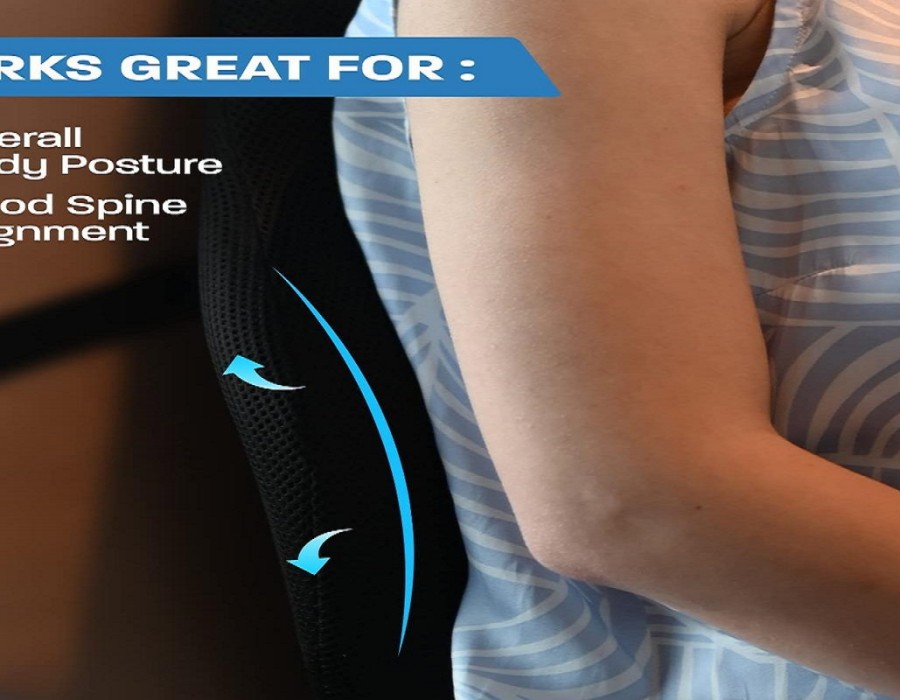Lower back pain is a common issue that affects millions of people around the world. Whether you're working from home, sitting in a long meeting, or simply enjoying your favorite chair, discomfort can creep in without warning. This persistent ache can stem from various causes—poor posture, lack of movement, and even stress. Thankfully, there are solutions to help ease this burden.
One effective remedy lies in something many overlook: chair back support. By providing proper alignment and cushioning for your spine, it can make a significant difference in how you feel throughout the day. So if you’re tired of shifting uncomfortably or wincing at every move due to lower back pain, it’s time to explore how chair back support could be your new best friend on the journey toward relief and comfort. Let’s dive deep into understanding its benefits and discover which options might work best for you!
Lower Back Pain and its Causes
Lower back pain is a widespread complaint that can significantly impact daily life. It often stems from various factors, making it crucial to understand its roots.
Sedentary lifestyles are a leading cause. Prolonged sitting weakens muscles and affects posture, putting excessive strain on the lower back. Similarly, poor ergonomics in workspaces can exacerbate discomfort over time.
Injuries and accidents also play a role. Strains and sprains during physical activities or lifting heavy objects can lead to acute pain that lingers if not treated properly.
Chronic conditions like arthritis or herniated discs may contribute as well. These issues create ongoing pressure on nerves, resulting in persistent ache or stiffness.
Emotional stress shouldn't be overlooked either; it often manifests physically, tightening muscles around the spine and intensifying discomfort. Awareness of these causes is vital for effective management strategies moving forward.
Understanding Chair Back Support and Its Benefits for Lower Back Pain
Chair back support is designed to enhance your seating experience, especially for those battling lower back pain. This specialized support helps maintain the natural curve of your spine. By doing so, it reduces pressure on the lumbar region.
When you sit for long periods, poor posture can lead to discomfort and strain. Chair back supports work as a cushion between your body and the chair. They encourage proper alignment and distribute weight evenly across your back.
Investing in quality chair back support not only alleviates existing pain but also prevents future issues. It encourages a healthier sitting posture that combats fatigue during lengthy tasks.
Incorporating this simple addition into your workspace or home office can transform how you feel throughout the day. Enjoying relief from nagging aches allows you to focus better on what really matters—your productivity and well-being!
Types of Chair Back Support: Lumbar Pillows, Lumbar Rolls, and Adjustable Supports
When it comes to chair back support, several options can help combat lower back pain. Lumbar pillows are a popular choice. They provide cushioning and promote better spinal alignment while sitting. These pillows often come in various materials, from memory foam to gel, catering to personal comfort preferences.
Lumbar rolls are another effective option. These cylindrical supports fit snugly against your lower back and encourage proper posture by filling the natural curve of the spine. They're portable too, making them great for use at home or during travel.
Adjustable supports offer versatility that many find beneficial. With these products, you can modify height and firmness according to your needs throughout the day. This flexibility is especially helpful if multiple people share the same workspace or if you experience fluctuating discomfort levels over time. Each type provides unique benefits tailored to different preferences and lifestyles.
Tips for Choosing the Right Chair with Proper Back Support
Choosing the right chair is crucial for maintaining back health. Look for chairs that offer adjustable lumbar support. This feature helps adapt to your unique spine curvature.
Pay attention to seat height. Your feet should rest flat on the floor, ensuring proper alignment of hips and knees. A chair with a depth adjustment can also enhance comfort.
Materials matter as well. Opt for breathable fabrics that provide cushioning without sacrificing support. Too firm or too soft can lead to discomfort over time.
Consider armrests—these should allow your shoulders to relax while keeping elbows close to your body.
Test drive various options before making a decision. A few minutes sitting in different chairs can reveal which one feels best for you and encourages good posture throughout the day.
How to Use Back Support for Chair Effectively
To use back support for chair effectively, start by positioning it correctly. Place the lumbar pillow or roll at your lower back's natural curve. This alignment helps maintain spinal integrity.
Adjust the height of your chair if possible. Your feet should rest flat on the floor while your knees are slightly below hip level. This setup reduces strain on your spine.
Take breaks regularly to stand and stretch. Even with proper support, sitting for long periods can lead to discomfort. Moving around promotes circulation and eases tension.
Also, consider integrating exercises that strengthen your core muscles into your routine. A strong core provides better stability and support for your lower back over time.
Pay attention to how you feel throughout the day. Adjustments may be necessary based on comfort levels as you familiarize yourself with different types of support.
Other Ways to Alleviate Lower Back Pain
Incorporating regular exercise can significantly benefit your lower back. Focus on low-impact activities like swimming, walking, or yoga to strengthen muscles without straining them.
Stretching is essential too. Gentle stretches can increase flexibility and relieve tension in the back. Consider routines that focus on your hamstrings and hip flexors, as tightness in these areas often contributes to discomfort.
Mindfulness practices such as meditation or deep breathing help reduce stress levels. When you're less stressed, you may notice a decrease in muscle tension throughout your body.
Ergonomic adjustments at work can make a world of difference. Ensure that your workstation promotes good posture by adjusting chair height and screen level appropriately.
Don't underestimate the power of heat therapy. A warm compress can soothe sore muscles while improving blood circulation for faster recovery from pain episodes.
Conclusion: Taking Care of Your Spine for a Healthier Life
Taking care of your spine is essential for a healthier life. Embracing chair back support can significantly alleviate lower back pain and improve your overall comfort while sitting. By understanding the causes of lower back pain, you can take proactive steps to enhance your workspace or home environment.
Choosing the right type of chair back support—be it lumbar pillows, rolls, or adjustable options—ensures that you have personalized comfort tailored to your needs. Implementing effective usage techniques will maximize these benefits, allowing you to focus better on tasks without discomfort distracting you.
In addition to using proper support in chairs, exploring other methods like exercise and stretching can further bolster spine health. Being mindful of posture throughout daily activities also contributes significantly to long-term relief from lower back pain.
Prioritize spinal health today for a more vibrant tomorrow. Your body will thank you!






Comments